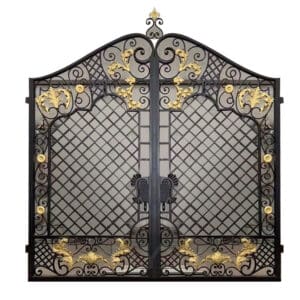
What should you use instead of a curtain wall?
What should you use instead of a curtain wall? Running into thermal or budget limitations with curtain walls? Modern alternatives now offer comparable aesthetics at
Replacing windows in a home is one of the most significant improvements homeowners can make, providing better insulation, increased energy efficiency, and an enhanced aesthetic appeal. However, one of the primary considerations for many is the cost. Understanding the factors that influence the cost of window replacement in America can help homeowners plan and budget effectively.

On average, the cost to replace a window in the U.S. ranges from $300 to $1,000 per window, including both materials and labor. This wide range reflects the variety of window types, materials, and installation complexities. A typical three-bedroom home with 10-15 windows could see total costs ranging from $3,000 to $15,000 or more.
For standard, double-hung vinyl windows, the national average cost is around $600 per window. This includes the cost of the window unit itself, which may be between $100 and $400, and the labor cost, which typically runs from $100 to $300 per window.
Several factors contribute to the overall cost of replacing windows in your home:
Window Type: Different window styles come with varying costs. Single-hung, double-hung, casement, bay, and bow windows all differ in price, with more complex designs generally costing more. For instance, a standard double-hung window might cost around $300-$600, while a bay or bow window could range from $1,000 to $4,500.
Material: The frame material plays a crucial role in pricing. Vinyl windows are the most affordable, followed by wood, fiberglass, and aluminum. For example, vinyl windows typically cost $100-$900, whereas wood windows can cost between $200 and $1,300. Fiberglass windows are often the most expensive, ranging from $500 to $1,500 per window.
Energy Efficiency: Energy-efficient windows, such as those with double or triple glazing, low-E coatings, or gas-filled panes, can significantly increase the initial cost. However, they often result in long-term savings on energy bills. Expect to pay an additional 10% to 20% for energy-efficient models.
Installation Complexity: The cost of labor can vary based on the complexity of the installation. For instance, replacing standard windows in a ground-floor room is usually less expensive than installing custom windows in a high-rise building or a home with difficult access. If the installation requires additional work, such as removing and replacing trim or dealing with structural issues, labor costs will rise accordingly.
Location: Prices can vary significantly based on your geographic location. Urban areas and regions with a higher cost of living generally see higher window replacement costs. For example, replacing windows in New York or California could be more expensive than in the Midwest or South.
Beyond the basic costs of the windows and installation, there are other potential expenses to be aware of:
Permits: Depending on where you live, you may need to obtain a permit for window replacement. Permit fees can range from $50 to $200, depending on your locality.
Disposal Fees: If the contractor needs to dispose of your old windows, they may charge a disposal fee, typically between $50 and $150.
Upgrades: If you’re considering upgrades like custom finishes, decorative glass, or enhanced security features, these can add to your overall costs.
Some homeowners may consider a DIY approach to save on labor costs. While this can be cost-effective, it’s essential to have the necessary skills and tools to ensure proper installation. Poorly installed windows can lead to drafts, leaks, and even structural damage, negating any potential savings.
Professional installation is generally recommended, especially for larger projects. Professional installers have the expertise to ensure that windows are correctly fitted and sealed, maximizing their energy efficiency and lifespan.
While replacing windows can be a significant upfront expense, it’s also a worthwhile investment. New windows can improve energy efficiency, reducing heating and cooling costs by up to 15% annually. Additionally, window replacement has a high ROI, with homeowners recouping about 70% to 80% of the cost when selling their home.
Given the cost, many homeowners may look for financing options to spread out the expense. Options include home equity loans, personal loans, or financing plans offered by window manufacturers or contractors. Some energy-efficient upgrades may also qualify for federal or state tax credits or rebates, further offsetting the cost.

The cost of replacing windows in America can vary widely depending on the type of windows, materials, installation complexity, and location. While it can be a significant investment, the long-term benefits of improved energy efficiency, increased home value, and enhanced comfort make it a worthwhile consideration. Homeowners should carefully research their options, obtain multiple quotes, and weigh the benefits of different window types and materials to make an informed decision.
Whether you’re looking to upgrade your home’s appearance, reduce energy bills, or increase its resale value, replacing your windows is a project that offers substantial returns in the long run.

What should you use instead of a curtain wall? Running into thermal or budget limitations with curtain walls? Modern alternatives now offer comparable aesthetics at

How to replace a door yourself? Tired of squeaky, drafty doors that stick? Replacing an interior door costs $50-$150 DIY versus $200-$500 hired out, and

How to get custom aluminum doors? Need sleek, durable entryways but overwhelmed by options? Custom aluminum doors range from $1,200-$8,000+ installed, with lead times of

How to make custom door mats? Want personalized home entryways without $75+ retail markups? Crafting custom doormats costs just $15-$35 using accessible outdoor-grade materials like

How much do custom window screens cost? Frustrated by insects ruining your fresh air enjoyment? Custom window screens typically cost $50-$300 per unit installed –

What is the best type of wall covering? Tired of staring at dull walls but overwhelmed by options? The “best” wall covering depends entirely on